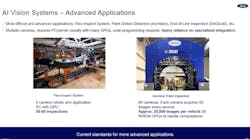General Motors Co. (IW 500/3) and Lyft Inc. are going to have a lot harder time wringing benefits from their newly minted partnership now that their biggest ride-sharing rivals just formed an alliance of their own in the world’s largest economy.
Earlier this year, GM poured $500 million into Lyft, half of a $1 billion round that valued the San Francisco-based startup at $5.5 billion. Just months before, Lyft had received a $100 million check from Didi Chuxing, China’s biggest ride-hailing business, solidifying an arrangement that would have helped both companies battle their shared global competitor, Uber Technologies Inc.
That all but dissolved this week when Didi and Uber joined forces for a $35 billion alliance in China. With it, Uber got $1 billion in cash that it can now use to focus on the U.S. market, where GM is counting on Lyft’s rapid growth to give it a real presence in the emerging business of ride sharing.
“I would be seriously unthrilled if I were at Lyft,” said Rett Wallace, co-founder of Triton Resources, which analyzes and invests in private companies. “Lyft’s now alone in their fight against Uber.”
With its 9% investment in Lyft, GM is hoping history doesn’t repeat itself. The Detroit automaker has a long track record of investing in companies and then seeing them suffer later.
It invested $420 million in France’s Peugeot SA in 2012, only to write down half of it within the next year. A decade ago, GM lowered the value of investments in Isuzu Motors Ltd. and reduced its stake as the Japanese company restructured. GM also spent $4 billion on a 20 percent stake in then-troubled Fiat Auto. And in 1992, the company bought National Rental Car and took a $744 million writedown the next year. It sold the company in 1995.
“GM spent an inordinate amount of money to get a window seat in the ride-hailing business,” said Eric Noble, president of CarLab, a consulting firm.
Even before Didi changed sides, Lyft faced a tough fight against Uber, which has about 80 percent of the U.S. ride-sharing market. San Francisco-based Uber delivered 62 million rides in the U.S. in July and 54 million in June, the company told Bloomberg. That’s up from 50 million in March.
Uber’s Discounts
Earlier this year, Lyft told investors that it would keep losses under $50 million a month while buying growth. Uber has aggressively offered subsidies and discounts in an attempt to maintain its significant advantage over its rival. Now it will have the cash to be even more aggressive.
Still, it would be wrong to count out Lyft altogether, Wallace said. Its partnership with Didi was responsible for only a minuscule number of Lyft’s rides, according to people familiar with the matter who weren’t authorized to speak publicly about the partnership. And while Uber may have more money to spend in the U.S. now that it’s leaving China, Uber will also face pressure to earn profits as it eyes a public offering.
“Over the next few weeks, we will evaluate our partnership with Didi,” Lyft said in a statement.
Growing Fast
Lyft has been growing dramatically. The startup had its best month ever in July, when it provided 13.9 million rides, according to a letter to investors obtained by Bloomberg. That’s up 12 percent over June and 260 percent over the July 2015. That growth comes in part from offering discounts, but Lyft told investors that it delivered 11.4 million rides, or 82 percent, at full cost.
GM says it can help Lyft grow even more, said Dave Roman, a spokesman for the automaker. The two companies are still expanding the Express Drive program in which Lyft drivers in several cities are renting new GM cars for $99 a week plus 20 cents a mile. If the drivers give enough rides, they don’t have to pay. GM has rolled the program out in Baltimore, Boston and Washington. It’s growing so fast that GM has plans to introduce it in more cities soon, Roman said.
The two companies are also working on using self-driving cars for Lyft, a project that’s moving forward, Roman said.
Lyft said in the letter its 2015 revenue increased 530 percent over 2014 and that revenue in the first half of 2016 was larger than what the company generated in all of 2015. Last year, Lyft incurred $360 million in losses on $200 million in revenue, according to a person familiar with the results who wasn’t authorized to speak publicly about them.
Uber, for its part, is now freed up to fight harder against Lyft. The market leader was spending millions to build its China market presence and fight Didi. Its discounting in China led to $2 billion in losses in two years in that market, people familiar with matter have said.
China was seen as a growth market but became a distraction, said Arun Sundararajan, a professor at New York University’s Leonard N. Stern School of Business, where he studies the sharing economy.
“Uber emerges from this deal even stronger, with the resources it had available in China now available in the U.S.,” Sundararajan said . “It raises the stakes for Lyft to differentiate its services in the U.S. more rapidly.”
By David Welch and Eric Newcomer




